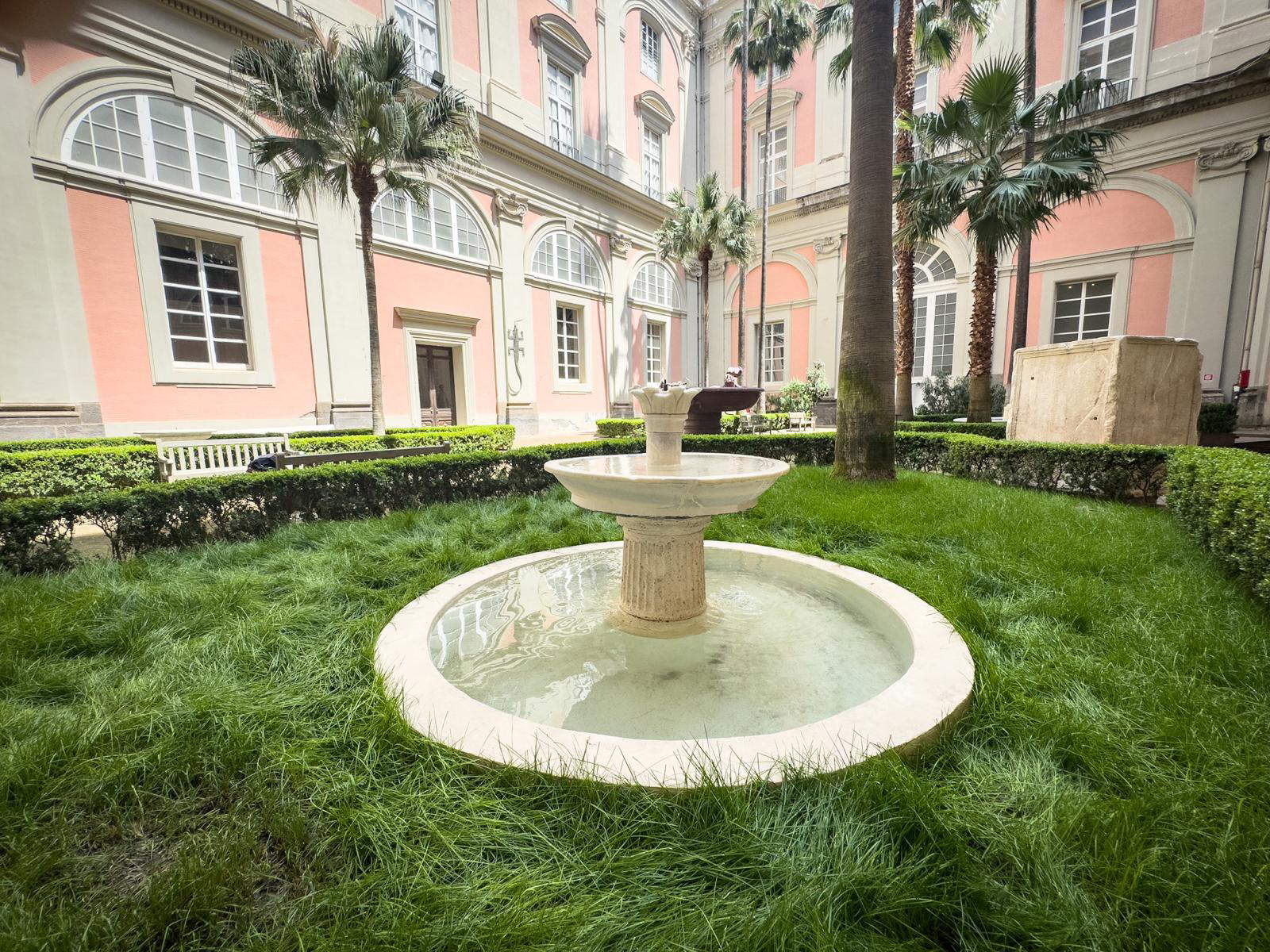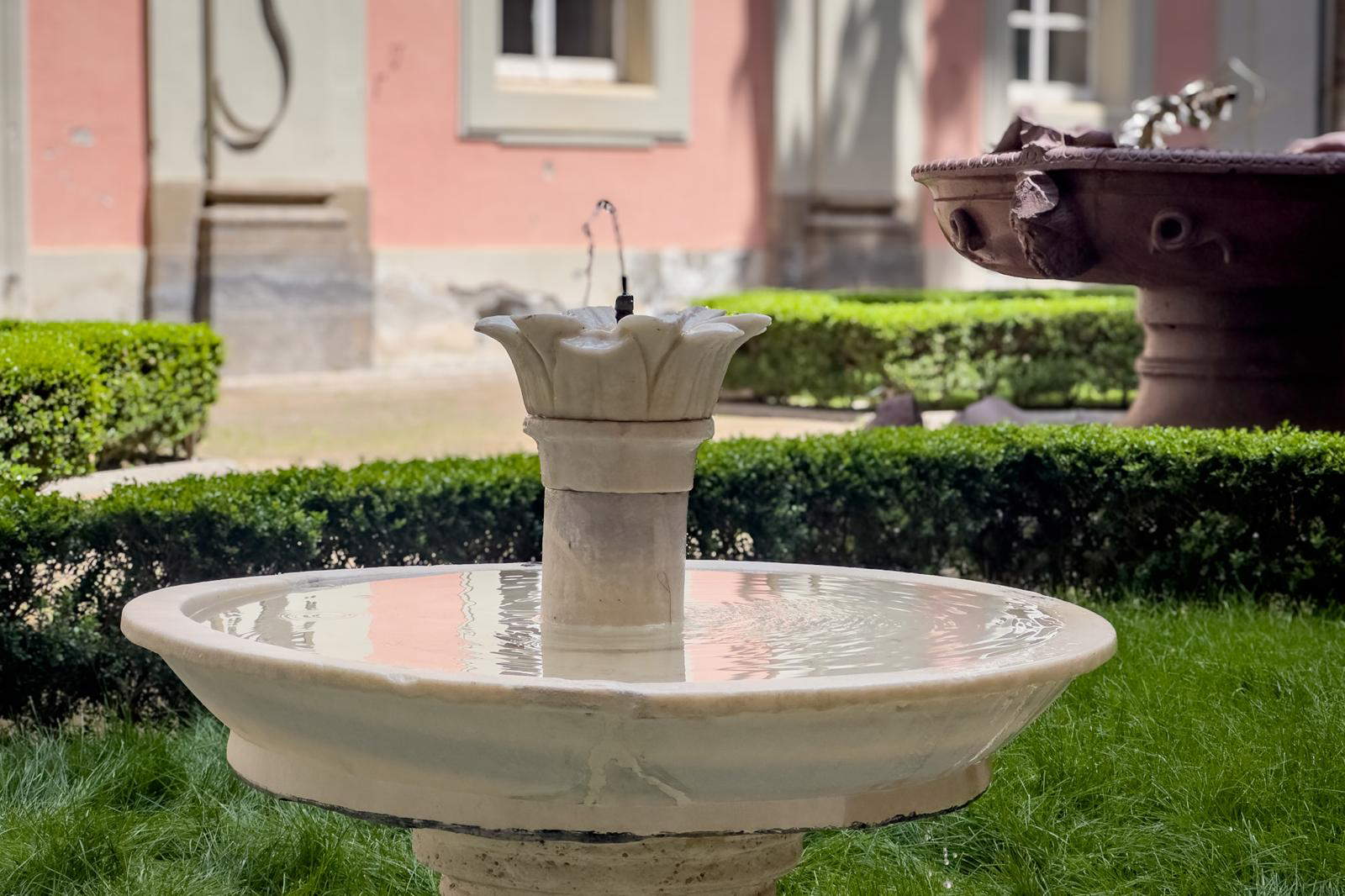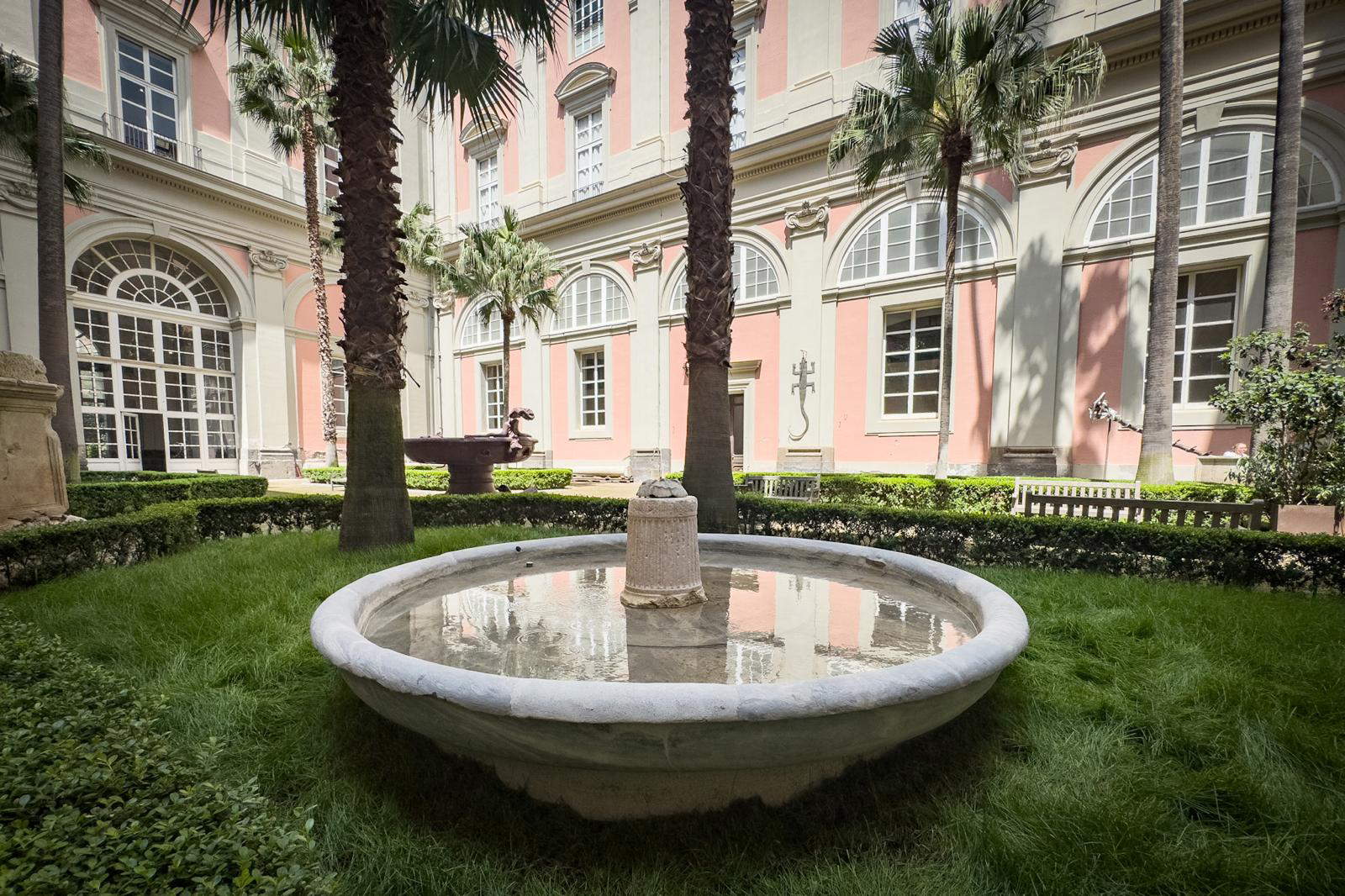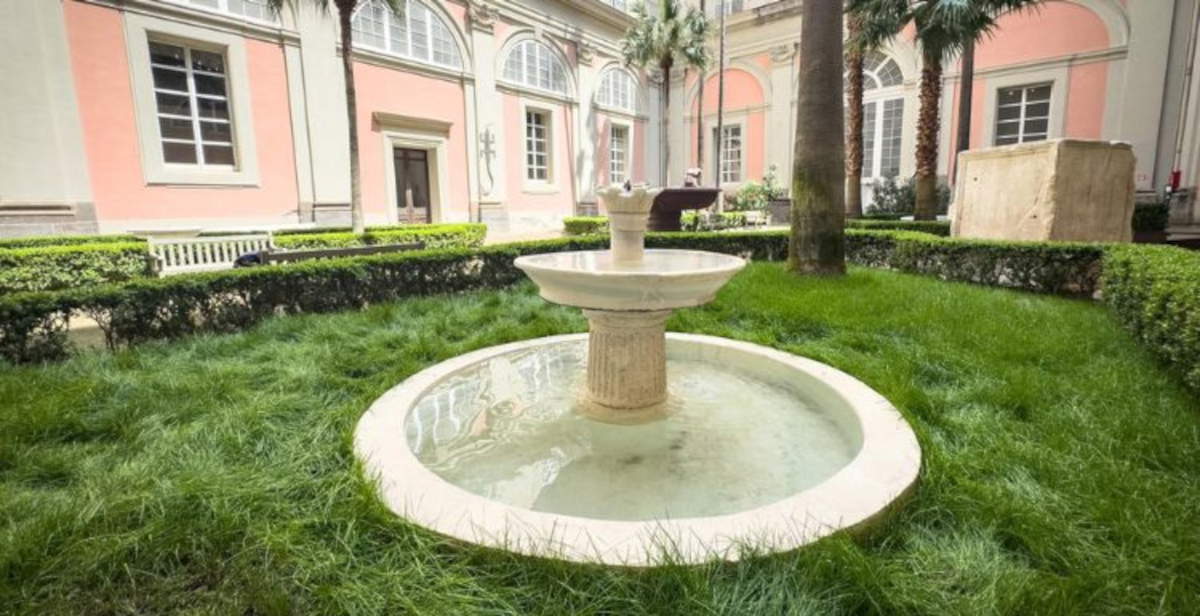In the National Archaeological Museum of Naples, the historic fountains of the Oriental Garden have returned to gush. After careful restoration work, the MANN reopens to public enjoyment one of its most fascinating places: a green area where museum architecture meets nature and invites an experience that goes beyond the observation of the collections. The intervention, made possible by a liberal disbursement from Acqua Campania S.p.A. (Nepta - Italgas Group) through theArt Bonus tool, is part of a broad vision of renovation of museum spaces, where the care of heritage coincides with openness to the public and renewed environmental awareness.
The project was overseen by the MANN Restoration Laboratory, under the responsibility of Mariateresa Operetto, with the collaboration of Manuela Valentini. The architectural and landscape direction was entrusted to Silvia Neri, while the function of Single Project Manager was assumed by architect Amanda Piezzo. The work was carried out by Pantone Restauri s.r.l., with financial support provided by Acqua Campania.

“The gardens are also fully part of our idea of a museum,” comments Director General Museums, MassimoOsanna. “They are spaces for meeting and stopping, capable of offering a different, more intimate time, in dialogue with beauty. This restoration restores not only the functionality of the fountains, but also the deep sense of a place designed to be experienced. I thank Acqua Campania, the Advisory Board and all the professionals at the Museum who made this intervention possible.”
“Acqua Campania’s donation is the result of the work of the Advisory Board, which I have chaired for years with the aim of protecting and enhancing the Museum’s heritage,” comments MANN Advisory Board Chair MirellaBarracco. “I thank the then director Paolo Giulierini, who initiated the project, and the current director Massimo Osanna, with whom the work was completed. Promoting a culture of greenery and sustainability is one of the goals that museum institutions must also set for themselves.”
“We are proud to have contributed to the enhancement of such a symbolic place as the MANN’s East Garden,” says Marco Lombardi, CEO of Acqua Campania. “As a company in the area, Acqua Campania is strongly committed to creating value for communities, not only through the efficient management of water resources, but also through initiatives that allow us to combine social responsibility and the protection of historical and cultural heritage. In this sense, restoring functionality to historic fountains means not only preserving their memory, but also restoring beauty and thus well-being to communities.”
The restoration involved three fountains located in the MANN’s Giardino Orientale, a historic area that now presents itself as a space for pause and reflection, as well as an integral part of the museum itinerary. The intervention involved a series of technical operations necessary to restore the functionality and aesthetic legibility of the structures. Cleaning made it possible to remove cementitious remakes that had accumulated over time, as well as biological patinas and limestone crusts that compromised the original appearance of the surfaces. What emerged was a new coherence among the architectural elements, the result of a conservation process that respected the history of the site. One of the fountains in particular returned an element of considerable interest: in the upper basin, on a small central column made of white Paros marble, a hitherto concealed sculptural decoration emerged. It is a carved flower, with projecting leaves and naturalistic motifs in relief, characterized by a finesse of execution that hints at possible connections with ancient ornamental models.
The mixed origin of the fountain, which combines elements from the Roman period with modern additions, makes the discovery particularly significant and the subject of future investigation by the museum. The restoration also incorporated a consideration of sustainable practices applicable to heritage conservation. All materials used were chosen for their low environmental impact and compatibility with the garden ecosystem. In particular, a natural essence derived from the oregano plant was chosen for the biocide treatment, avoiding the use of conventional chemicals that, while effective, can be harmful to the flora. The choice reflects a precise orientation of the museum, which is attentive to the quality of materials and the long-term effects of conservation operations.

The intervention made it possible to restore to full functionality a space of historical and landscape significance, while enhancing the MANN’s cultural identity and strengthening its public dimension. The Oriental Garden, often perceived as an area marginal to the exhibition halls, is thus reintegrated into the museum’s itinerary, becoming an active place of welcome, well-being and relationship. The project also fits into a context of growing attention to historic gardens and urban green spaces, now recognized both as part of the cultural heritage and as resources for the quality of life in cities.
The MANN’s Oriental Garden, with its restored fountains and vegetation integrated into a museum setting, thus becomes an example of how culture can link with the environment in a sustainable perspective. The presence of water, a central element in the garden’s design and a symbol of regeneration, returns as a sensory experience, helping to strengthen the bond between the museum and its visitors. The restoration of the fountains in the Oriental Garden is a tangible sign of how public-private synergies can generate shared value.

 |
| MANN's East Garden fountains are reborn thanks to a restoration supported by Art Bonus |
Warning: the translation into English of the original Italian article was created using automatic tools. We undertake to review all articles, but we do not guarantee the total absence of inaccuracies in the translation due to the program. You can find the original by clicking on the ITA button. If you find any mistake,please contact us.